The business culture is transforming in line with the increasing complexity of operations. With the change in workforce composition and the emergence of the younger generations, workplace dynamics are changing.
The rapidly evolving business environment requires quick response and incisive strategizing, including tactical shifts as and when needed. At the organization or board level, teams are constantly being configured/re-configured.
Gone are the days when teams functioned strictly within operational silos. Growing interdependence of functions, coupled with the requirement of cross-functional skill sets, necessitates that leaders take a collaborative approach.
Project managers may often find themselves pitted against members who are not their direct reports. Leaders, too, may need to build consensus with stakeholders across the organization on several strategic initiatives. Disagreement could set people at loggerheads.
What should be the approach to execution in this case?
Command and control, which is usually the modus operandi when working with those directly reporting to you, may not be effective. A more tactful approach is required when project managers work with those who don’t fall formally under their purview, or when leaders work for consensus building.
What counts are interpersonal skills and emotional intelligence. Clearly, leadership adaptability and flexibility are at stake.
Many leaders or managers simply lack the interpersonal skills required to manage teams, their direct reports or otherwise. The discrepancy may be masked when managers work with their direct reports. Execution is driven more because authority or chain of command demands it.
But, when working with cross-functional teams, interpersonal skills trump the chain of command.
The question is that how do you get people who do not report to you, work for you? How can leaders get the various stakeholders in the organization to buy their ideas? What are these key interpersonal skills at the workplace that are relevant when working with cross-functional teams?
These are persuasion and influence that represent well-developed emotional intelligence.
The latest data on emotional intelligence compiled in a March 1, 2023 article at Gitnux, a digital software and review platform, throws light on several aspects. Citing credible sources, such as the Niagara Institute, it says:
- Less than 20% of companies qualify as emotionally intelligent, while more than 65% of organizations lack the tools required to develop or leverage emotional intelligence.
- Over 40% of organizations globally conduct training on emotional intelligence for the senior management.
- Emotional intelligence plays a highly significant role (90%) in setting high performers apart from their peers with similar knowledge and technical expertise.
Given the importance of these skills,it is imperative they be acquired and sharpened. Imagine a scenario where a leader or project manager is assigned a top performer who has a higher EI than them? Can you visualize the swing in dynamics?
Leveraging influence and persuasion, leaders or managers can influence their teams/the larger management/other stakeholders, avoid conflict, and lead projects to completion.
The key reason is that when working with someone who is not aware of your authority or personality, coercion will not work. Today, the workforce, because of the influx of the younger generations and other changes in the talent requirement, is aspirational and assertive. So leaders or managers need to be persuasive in connecting or influencing them.
How can leaders or managers use persuasion and influence as strategic techniques and tools in emotional intelligence?
Rule out the tyrants. Nagging and coercion. According to e-learning provider SkillsYouNeed, these are unpleasant traits that could lead the cause to wither away.
Often, leaders may believe that by harping on their perspective repeatedly, they can drill down the idea into their subordinates, the second line, or other stakeholders across the organization. Managers, too, may be a victim of the same approach in executing projects. Hearing the same voice and the same thing nags the listeners.
A second fallacy is to order others, the juniors, especially, falling back on the power of position.
Both are deterrents. Grinding or coercing others into submission only works for the short term. Initially, peers or subordinates may take it out of courtesy or accommodate your views to show respect. However, no one likes to do things because they have to—they would rather do because they want to.
You need them to buy your idea.
Adopt the language of bridges, not barriers. According to Kurt Mortensen, an authority on persuasion, negotiation, motivation and influence in the US; author of books such as Persuasion IQ; and founder of the Persuasion Institute, there are 10 barriers to persuasion that need to be broken:
- Assuming that your persuasion skills are good enough and don’t require honing.
Take a deep look at yourself and demarcate the areas of development. Work on these.
- Trying extremely hard to persuade.
People are easily put off by anything excessive.
- Not putting in the desired effort to get what you want
Efforts have to be made, judiciously.
- Being obsessed with one’s own voice.
Stop speaking. Listen to the people you are looking to persuade. People want to be heard. Let’s say you are planning a strategic initiative. Leaders, by assuming that they know the best, would be committing a gross error.
Be consultative. Seek suggestions and ideas. This assures the stakeholders that they will be heard and their concerns addressed.
- Giving an information overload that confuses people.
This typically happens during a cross-functional project. When people from other teams come together, the project manager, in their bid to establish authority, may not want to relinquish the mic to anyone.
What follows is a deluge of information and instructions. For instance, some managers may think of quoting data extensively. If this is unnecessary, people will think the individual is hiding behind numbers.
State the requirements clearly: the project’s scope, the timeline, the goals; how these will be achieved; and the gatekeepers of quality. Be concise and stick to your point.
- Showing desperation.
Be mindful of your body language, tone of voice, the words you choose. The more you appear calm and in control of the situation, the more re-assuring it is.
For instance, mid-way during execution, a project can run into rough waters: a timeline crossed, quality errors, or capacity shortage. How you steer through the patch, or what is your poise in course correction, will play a key role in influencing the audience.
- Not even attempting to persuade dragged down by the fear of rejection.
Make a start. Try with small steps. Approach people individually, if you feel they may hound you in a group. But don’t just sit on the shores for the schooner to turn up on its own – it won’t.
- Not doing the required preparation overconfident in the ability to‘wing it’.
People can easily see through.They want straight answers, no hemming and hawing.
For example, you want to take the organization in a certain direction. How do you convince the management to agree? Not by oratory, but by hard and concrete evidence of why you think it will work. Don’t showcase some utopian vision that only sounds good. Be realistic. Be clear about the why, the prospects, and the how.
- Making wrong assumptions about the audience.
Never make the mistake of thinking they are gullible, irrespective of how junior they may be. Suppose a grey area emerges in a project about which even you as a manager are not clear. How will you handle?
Be honest. That is the only way to come out of the blind spot. Don’t assume even the rest of the members do not know about it. Openly express your limitations and ask for ideas.
This will help you win their trust. Also, if this calls for reshuffling of responsibilities, people will be more open to it.
- Not focusing on striking the right conversation from the start.
It is all about communication. You need to engage in order to persuade, right from the beginning.
If you are a manager tasked with a project, don’t wait to connect with your team only when it reaches a certain scale. Or if you are a leader that needs to facilitate collaboration (give link), you need to open conversations.
That which affords focus. Clarity.
This is the core principle to operate on. Whether undertaking a strategic initiative or executing a project, a leader must be clear about its various aspects: objectives, goals, priorities, challenges, etc.
This will help in two ways: one, in communicating to the team about what is expected and how to go about with it, and, two, in getting a better visibility about how things can shape up.
Both are crucial to influencing their decision to cooperate.
Why are they the way they are? Well, the job of a leader is to understand different perspectives.
Knowing how and why people think in a certain way helps you tailor your approach authentically. You get a 360-degree view of the situation. Understanding the perspective of those on the other side of the table lends prudence. You get to know their concerns, views and mindset. Only when you understand something can you crack it.
How can you do that?
Talk to the people.
Or, before onboarding for a cross-functional project, you would be consulting their reporting managers. Instead of checking on performance only, find out more about the individual’s thinking process.
This will help you visualize the questions that can come from them, or how to approach them.
Similarly, with stakeholders, when approaching them for a tactical shift in strategy, for instance. The more you know about the background or mindset of the individual, the better you will be prepared to strike the right conversation.
Sometimes you may do well to follow some or observe their habits on professional or social media platforms. This will give a good idea about what they like, their views on developing issues, whom do they follow, etc. Each of these you can leverage to develop your strategy to reach out.
What’s in it for me? This is the crux of every business relationship at the workplace – the unique selling proposition.
Persuasion and influence are a lot about bargaining right. People on either side of the table would not want to build anything on quicksand!
As a leader, it is important that you leverage your negotiating skills appropriately. Think thoroughly how you will use your judgment to persuade or influence.
Suppose you are approaching the board or management to support a strategic investment. How do you think you could make a compelling offer? Do you foresee, with a strong probability, very high returnsat minimal risks? Or do you remind them of the oath-taker that you are – the promises you’ve made and delivered? What is the leverage you are looking to use to influence?
Similarly, with teams working on a project. What do people stand to gain from participation? Is it professional growth, exposure, or maybe a visit to the client site? Say you are facing a resource shortage. How do you appeal to another person to share their team member, or get involved in the project? Could this be a return favor for something you did? It depends on how you package it.
It’s all about evaluating your relationship with people when you approach them as a leader or a manager. You need to assess carefully. What can you offer and what they can give? How to strike that balance for a win-win situation – this is the moot question.
To conclude
Persuasion and influence as emotional intelligence techniques are the people skills every leader or manager needs to have. Given the complex and evolving business environment today, having the right people or soft skills is as important as having the authority to execute.
Whether addressing board-level stakeholders or in executing cross-functional projects, success is contingent on the leadership ability of the individual at the helm. When dealing with conflicting opinions or other individuals at leadership positions, tact is more effective than authority.
Sensitivity, judgement, persuasion, influence – these are all tenets of personal relationships that leaders or managers can use effectively to create a win-win situation. Their relevance is greater now than ever. Considering the shifts in business dynamics and the fluidity of the business environment, the more leaders build stronger relationships, the greater the advantage for them.
Poor leadership demands respect, competent leadership commands it.


